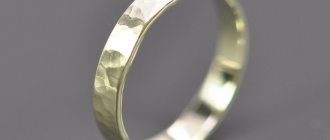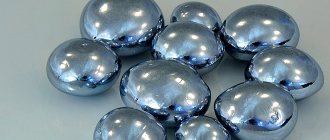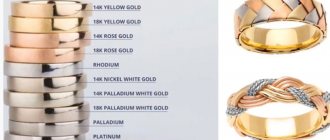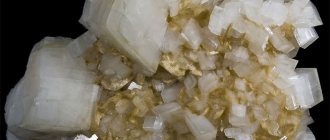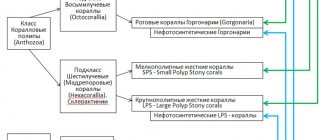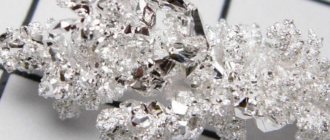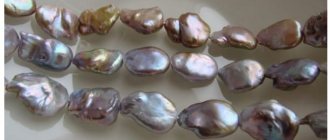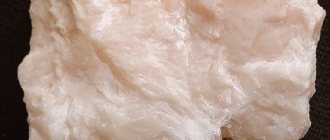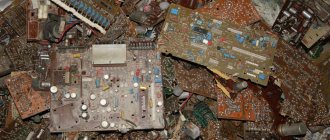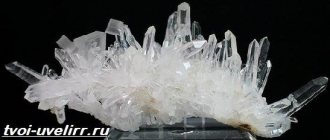Palladium is one of the varieties of precious metals that has become quite widespread in various industries. For example, palladium is used to create a variety of jewelry. This metal is also characterized by unique physical and chemical properties, relatively low cost and similarity to platinum, which also has a positive effect on its popularity. This material will discuss its practical use in more detail, as well as all its features.
History of appearance
Palladium is a ductile mineral with a silvery-white color. Due to its properties, palladium looks like platinum. However, it is immediately worth noting that it belongs to the category of platinum minerals, so this similarity is easy to explain.
In the first years of the XIX century. English chemist W. Wollaston, purifying platinum from impurities, obtained a precipitate of an unexpected color. This gave reason to assume the existence of a new chemical element, which was called “palladium”.
What followed was a series of intriguing events. Through a mineral dealer, Wollaston anonymously put the ingot up for sale, claiming that it was a new metal - palladium. There were those who wanted to refute the discovery of a new chemical element. Scientific debates either subsided or resumed, but remained inconclusive.
To stir up interest, Wollaston, again anonymously, offered a prize to anyone who could create this metal artificially, but no one was able to do it. And only in 1805, at a meeting of the Royal Society, the chemist reported on how palladium was obtained and that he was the author of anonymous publications.
How to determine silver or platinum?
Platinum
harder and therefore resistant to physical impact.
At home, you can also take a rotten egg on which you can put both decorations. Silver
will turn black due to hydrogen sulfide,
platinum
will retain its fresh appearance as before, which will help determine the authenticity of the product.
Interesting materials:
How to withdraw money from Yota balance to a card? How to withdraw money from Steam to a Privatbank card? How to withdraw crypto to a card? How to block a Pyaterochka card? How to download Google maps offline? How to upload maps to Maps me? How to replace Vodafone card with 4g? How to register a Lukoil card? How to register for Netflix without a card? How does a sound card affect sound quality?
Palladium in nature
It is impossible to find the metal in its pure form in nature; palladium is always found in admixtures with other minerals. Currently, science knows about 30 minerals with which it can be combined.
In appearance, palladium is very similar to platinum, which is why these precious metals are often confused. It is worth noting that in some deposits these metals are mined together, and chemical processing is subsequently used to separate them. In some cases, palladium can be interspersed with gold veins, then their connection is formed.
Most of the palladium on Earth comes from meteorite impacts. Palladium crystals are found in large volumes in alien fragments.
There are several types of deposits where palladium can be found. It is immediately worth noting that it is almost impossible to find it in the form of nuggets, so there is a need for chemical treatment to remove impurities and isolate the metal itself.
All palladium deposits can be divided into two large categories:
- Deposits in areas of ore deposits. Here are nuggets that have been accumulated over many years;
- Primary deposits. Contain palladium compounds with other impurities.
At the same time, there are two main ways to work with palladium deposits - mine and quarry. The first option requires the preliminary creation of mines, that is, an underground tunnel system. Here, layers of earth are undermined, which will subsequently be processed manually or mechanically to extract palladium.
The quarry method involves the use of heavy earth-moving equipment, with the help of which the ore will be transported. The leaders in palladium mining are the Russian Federation and South Africa.
At the moment, experts differ in their understanding of the total amount of palladium reserves on Earth. Some are sure that its reserves exceed gold reserves by 2-3 times, and some that, on the contrary, are about 20 times inferior.
Prices
World reserves of palladium amount to hundreds of tons, but the market is recording a shortage of raw materials.
It is natural that prices for it are rising:
- In December 2022, the price exceeded $1,900 per troy ounce.
- Since 2016, prices on the stock exchange have quadrupled, breaking the psychological mark of $2,000. During the same time, gold rose in price by 1.5 times.
- On February 27, 2022, a new high per ounce was recorded – $2,795. That is, 1 gram of palladium costs about $90.
The price fluctuates according to the needs of the industry. Since cars with gasoline engines will be in demand for a long time, it is unlikely to fall.
Palladium reserves in the world
Palladium is a rare metal, its content by mass in the earth’s crust is 6.3·10-7%. There is no exact estimate of its reserves. Some publications publish information that palladium exceeds gold reserves by 2-3 times, other sources claim that its amount is an order of magnitude less.
Pd is a platinum group metal. It is part of 3 dozen minerals, and is also found in the form of nuggets and placers. It is found in the “company” of noble metals, especially often with platinum and gold (palladium platinum, palladium gold, porpecite). Palladium has not yet been found in its pure form.
Rich deposits have been discovered in Russia, Africa, North America, Australia, Colombia, and Alaska. Palladium is found not only in the earth’s crust, but also in space, from where it “flies in” as part of meteorites.
Palladium mining
98% of palladium is mined from platinum, copper-nickel and chrome ores. Half of the world's production comes from Russia (Norilsk, Murmansk region, Ural). South Africa is in second place in terms of production (Bushveld complex, about 40%), followed by Canada, the USA, and Zimbabwe.
The world leader in palladium production is the Norilsk Mining and Metallurgical Plant (40%).
Properties of palladium
Palladium is a silver-colored metal, very similar to platinum, only lighter. Atomic mass – 106.42 a. e.m. It has a face-centered cubic lattice.
Physical properties
| Atomic radius | 1.37·10 -14 m |
| Thermal conductivity (300 K) | 71.8 W/(m K) |
| Boiling temperature | 2940 °C |
| Ud. heat of vaporization | 372.4 kJ/mol |
| Melting point in degrees | 1554 |
| Ud. heat of fusion | 17.24 kJ/mol |
| Hardness (Mohs, Brinell) | 5.0 (out of 10), 52 kgf/mm2 |
| Electrical resistivity (at 20 °C) | 1.07 10-7 Ohm m |
| Tensile strength (at 20 °C) | 14 kg/mm2 |
| Density (at 20 °C, > 1554 °C) | 12.02 g/cm3, 10.38 g/cm3 |
| Specific heat capacity (25 °C) | 0.0584 cal/g deg |
| Linear expansion coefficient (0-100 °C) | 1.17 10 -5 1/K |
| Elongation (annealed) | 55% |
| Magnetic properties | paramagnetic |
The metal is 2.5 times harder during cold working, but after annealing it becomes softer. The melting point is the lowest among the chemical elements of the platinum group.
Chemical properties
| Molar mass | 106.42 g/mol |
| Abbreviated electronic formula | [Kr] 4d10 |
| Electronic graphic formula | K2 L8 M18 N18 |
| Covalent radius | 128 PM |
| Valence | II, IV |
| Valence electrons | 10 |
| Oxidation states | 0, +1, + 2, +3, + 4 |
| Ionization energy | 804.2 kJ/mol |
In terms of chemical resistance, palladium is weaker than its “colleagues” of its group. In air without heating it reacts with aqua regia, and when heated - with nitric and sulfuric acids. Inert towards water, non-concentrated acids and alkalis, ammonia. In air, Pd oxidizes when heated to 850 °C, then the metal brightens.
Palladium has a high absorption capacity for gases. The ingot absorbs 850 times the volume of hydrogen, the “niello” is even more productive, and a plate measuring 1 x 1 x 0.1 cm passes 40 cm3 of this gas in 1 minute. Due to its ability to absorb gases, 75% of this metal is used in the production of automobile catalysts.
Optical properties
Under the influence of light rays, Pd does not glow and does not change its color.
Areas of use of palladium
This element is most used in the following types of human activities:
- Chemical industry. Here, palladium has proven itself to be an extremely popular catalyst, which shows high efficiency in oil processing and fat refining. If we pay attention to electrochemistry, here palladium is used as a key to galvanic metallization of dielectrics. In addition, palladium allows hydrogen to be purified.
- Electrical engineering. In this industry, the main advantage of the metal is its resistance to sulfides, which is why it is used as a coating. For example, it allows the production of high-precision voltagometers. Also, the properties of palladium have led to its active use in the production of ceramic capacitors. Moreover, it was used in the creation of radio components, for example, switch contacts for control-recording machines.
- Jewelry. Palladium is used to create white gold because its content in the alloy allows it to change the yellow tint to a silvery white.
- Medicine. Palladium is used in the creation of a certain category of drugs intended to fight cancer and tumors. Metal is also widely used in dentistry, where it is needed to create prosthetics. In rare cases, it is used to create medical instruments and pacemakers.
Industrial applications of metal
Palladium mining today satisfies the demand on the market, which is mainly industrial. The application of Pd is distributed as follows:
- 70% - production of automotive catalysts;
- 10% - electronics industry;
- 5% - chemical industry;
- 5% - medicine;
- 5% - investments;
- 5% - jewelry and other areas of use.
The main part of the mined metal is used for the production of automotive catalysts, which is why the demand for Pd depends on the economic situation in the engineering industry of a particular consumer country. Neutralizers containing palladium are necessary in the production of cars of any brand for afterburning exhaust gases. It was the use of Pd instead of platinum, which was scarce in the 2000s, that led to an increase in quotations of this precious metal on world exchanges. An additional impetus was the EU decision to limit automobile emissions and tighten control over this area. Catalysts containing Pd are also necessary for purifying gas emissions from thermal power plants.
The use of palladium in the chemical industry is extremely wide. Being an excellent catalyst, Pd is indispensable in the processes of oil cracking and fat hydrogenation. This chemical element is used as a catalyst in the production of acetylene, ammonia, chlorine, sulfuric and nitric acids, caustic soda, fertilizers and pharmaceuticals. Palladium chloride is used in industry as an indicator for detecting trace amounts of carbon monoxide in gas mixtures.
The metal is widely used in processes of deep purification of hydrogen, which actively diffuses through palladium. The gas is passed under pressure through heated palladium tubes, resulting in hydrogen passing through the metal faster than other impurities that are retained in the tubes. Since the use of pure palladium for these purposes is expensive, in order to reduce production costs, Pd alloys with silver or yttrium are used to purify hydrogen.
Pd and its alloys are used in the electronics industry. it is used to create coatings that are resistant to sulfides. The metal has found its application in the production of military, aerospace equipment and civil equipment. The element is necessary when producing slide chords, as it is highly wear-resistant. These properties of the precious metal are excellent for its use in contact groups. In civilian equipment, Pd was actively used in the 80s for contacts and strings of Soviet control-recording machines and automatic telephone exchanges.
This is what a rheochord looks like.
Where else is palladium used? It is a component of ceramic capacitors, known to all radio amateurs. The element is present in KM type capacitors, characterized by high temperature stability of the capacitance, which are present in any high-frequency radio and television equipment, mobile phones and computers. The presence of Pd in radio components attracts fans of metal refining at home.
The metal has also found application in other areas of industrial production, where it is used for a variety of purposes: palladium is necessary for the process of manufacturing special chemical glassware, as well as corrosion-resistant parts of special-purpose measuring instruments. Pd is also indispensable in glass making, where it is used in crucibles for melting glass.
Palladium has been increasingly used in medicine in recent years. Metal and its alloys are used to produce parts for various medical devices and instruments. The simplest example of the use of Pd in this industry is the production of pacemakers, individual parts of which are made from this precious metal. Sometimes the element is used to produce cytostatic drugs.
In medicine, the largest share of palladium is spent on the manufacture of dentures. The development of dental research and an increase in the accompanying demand for the metal can increase demand and quotations for the element in the future - this factor is one of the potential reasons for the increase in the price of Pd on exchanges.
Pros and cons of palladium
Positive properties of metal:
- ease;
- strength;
- plastic;
- hypoallergenic;
- high catalytic qualities;
- weak oxidation.
Jewelry made from palladium does not become covered with plaque and retains its original appearance for decades.
The main disadvantages include the rarity of the metal and sharp price fluctuations up and down, so it is risky to buy palladium for investment purposes.
How to distinguish palladium from other metals
Palladium is very actively used in electrical engineering, in the creation of wiring and equipment for various vehicles: marine, space and aeronautical. There are different ways to use it, some involve sputtering and some involve creating components from solid palladium. Palladium is easy to distinguish from silver because it retains its lightness and brilliance in any combination. These two metals are often used together to create equipment.
When sulfide resistance and oxidation protection are required, palladium is also used as a replacement for silver. This includes the following categories of radio components:
- Computer printed circuit boards;
- Military fees;
- Metal core resistors;
- Reochord wire;
- Potentiometers.
Palladium products are actively used in the creation of many devices. This is explained by the fact that the use of palladium makes it possible to significantly simplify their circuits, as well as provide better performance properties.
How not to buy a fake
The flawless appearance of the product speaks in favor of palladium. If the item is dull or warped, the likelihood that it is made from palladium is negligible. To avoid purchasing a fake, you need to show the product to a jeweler-appraiser.
If the jewelry has a hallmark other than 500 or 850, it is also not palladium.
The third way to determine palladium at home is to find the density of the metal from which the product is made. To do this, you need to determine the weight, accurate to hundredths of a gram, and volume by immersing the product in distilled water and weighing the result before and after immersion. To find out density, the measured weight is divided by the volume.
How much does palladium cost on the stock exchange?
Palladium - prices on world exchanges
| London fixing, $/troy ounce | Discount prices of the Central Bank of the Russian Federation, rub/g | |
| Metal | date | Meaning |
| Palladium | 29.06 | 6207,96 |
Interesting materials:
What is the unit of measurement for a segment? What is the effectively equivalent temperature? What is eco-leather and eco-fur? What is exposition in literature example? What is a circuit element? What is embed code? What is Epsilon in physics? What is an etude and why is it needed? What is the Faculty of Applied Mathematics and Computer Science? What is a fan account?
Tips for caring for palladium products, storage
Palladium does not tend to fade, it is resistant to deformation, but still, in order for jewelry made from this metal to last forever, it is advisable to avoid impacts, mechanical damage, and contact with aggressive environments. Products made from palladium are stored separately from jewelry made from other metals.
At home, palladium products are cleaned with a cloth soaked in a special solution (sold in jewelry stores), or washed in a mild soap solution and wiped with a dry cloth. Polishing in a jewelry workshop will help restore shine and hide micro-scratches that inevitably appear over time.
Samples
Like gold, silver, and platinum, palladium has a metric and carat standard system.
Composition and compliance of samples:
| Sample (metric/carat) | Compound |
| 500/12 | Half palladium and silver (or nickel). |
| 850/20 | 15% – silver, copper or nickel. |
| 950/23 | 5% – copper, ruthenium or nickel. |
Along with gold, silver, and platinum, palladium is subject to hallmarking.
Russian palladium products are stamped with an octagon proof plus the silhouette of a woman in a kokoshnik. Soviet products were marked with a hallmark and the image of a five-pointed star with a hammer and sickle.
Bankers and stockbrokers use 999-grade material (pure palladium).
Palladium and metal jewelry
In some cases, palladium can have a price per gram similar to real gold. In order to determine the cost of a specific sample of palladium, it is necessary to determine its sample. The most common hallmarks are 500 and 850. The highest hallmark gives the maximum price, and the price will increase as the lot grows to significant volumes.
Wedding ring made of palladium
However, it is worth noting that palladium is practically not used as a pure metal to create jewelry because it is too malleable. Therefore, it is either added to other precious metals or diluted itself.
In terms of prices, palladium ranks third among all precious metals, behind only gold and platinum.
In its pure form, palladium costs on average 1300-1400 rubles per gram. The price of the product will be determined by the percentage of palladium. For example, if the metal content is from 18 to 28%, the price ranges from 230 to 360 rubles per gram, and if the content exceeds 80%, then the price starts from 1000 rubles per gram.
Palladium, like gold, silver, and platinum, was recognized as an investment product. The only condition is that a 999th sample of metal is required. For investments, special investment coins are issued, and the opportunity to invest in a metal bank account is also available.
In order to test palladium at home, you need to immerse it in hot nitric acid. Real palladium will dissolve in it.
Chemical
The active use of palladium in various fields of activity is also explained by its chemical properties. First of all, it should be noted that it has a fairly high inertness, as well as galvanic resistance, which is extremely rare among modern metals. Such properties are explained by the atomic structure of the element. It is also worth saying that it does not interact in any way with acids, water molecules and alkalis, so it will not be possible to carry out the simplest school experiments on it, although hardly anyone will agree to get it for such purposes.
If you heat the metal to 350 degrees, its resistance will remain stable. But as this indicator increases, it will begin to oxidize. As a result of this reaction, a dull oxide film is formed on the metal surface. If you heat it to 850 degrees, you can observe its disintegration. This phenomenon is explained by the fact that in the temperature range from 800 to 850 degrees the element is already resistant to oxidation and does not succumb to it.
Not long ago, scientists discovered one interesting fact. Its essence is that a solution of nitric acid can make a pure titanium plate thinner by 19 mm per year, and in the case of an alloy of palladium with the same titanium, thinning will occur much more slowly - only 0.10 mm per year.
Heating up to 500 degrees, the element successfully interacts with various oxidizing agents, including fluorine. Thanks to this, scientists have been able to conduct a lot of research.
An additional chemical property of palladium is its ability to enhance the anti-corrosion capabilities of titanium. When a precious metal is added to this element, its resistance to aggressive environments increases significantly.
How to distinguish from other metals
It is difficult to identify palladium by eye and it is impossible to distinguish it from other silver-white metals. Identification is carried out using special methods.
From silver
Palladium, unlike silver, does not turn black and retains its shine. The metals have almost the same specific gravity, silver is twice as soft.
In air, silver does not oxidize even when heated, while palladium is covered with an oxide film at temperatures of 300-850 °C.
From platinum
The metal, named after the asteroid Pallas, is harder and almost twice as light as platinum. It reacts to a mixture consisting of aqua regia and 10% potassium iodide, to which Pt shows resistance.
origin of name
Named after the asteroid Pallas, discovered by the German astronomer Olbers in 1802, that is, shortly before the discovery of palladium. In turn, the asteroid is named after Pallas Athena from ancient Greek mythology. Palladium, or Palladium, is the legendary wooden image of Pallas Athena that fell from the sky; according to the prophecy of Helen (son of Priam), Troy will remain indestructible as long as this talisman is kept within its walls. According to legend, only after the goddess’s favorites, Odysseus and Diomedes, stole Palladium during a night raid, did this stronghold fall.
Which radio components contain palladium?
The use of pure palladium in radio components is possible due to the metal’s resistance to oxidation; therefore, it is used to cover contacts and some conductors in expensive electrical and radio engineering devices. Palladium is most often used in the form of alloys. The list of devices and radio components in which this metal can be found is extensive:
- ceramic capacitors, boards for computers from the USSR era;
- potentiometer shells;
- electrical connectors;
- resistor cores;
- step finders;
- some high frequency generators;
- immittance meters;
- recorders.
Radio components containing palladium are handed over to special scrap metal collection points.
Answers and questions
Let's answer some frequently asked questions about the metal Palladium.
Where can you find palladium at home?
Palladium is present in jewelry. Radio components containing this metal are used primarily in expensive and high-precision devices for military, aviation and space technology.
What is the purity of palladium?
Palladium purity grades are 500 and 850, which means 50% and 85% pure metal content in the alloy. Nickel, gold, and copper are used as impurities.
How does palladium dissolve?
This metal dissolves in aqua regia and in hot nitric and sulfuric acids. The resulting solution acquires a rich brown color.
Alloys
Palladium is too soft, in practice it is only suitable for use in alloys.
Jewelers call them hallmarks; the alloy is dominated by palladium.
In industry it’s the other way around: adding microdoses of palladium improves the physical and chemical properties of alloys with a predominance of other metals.
Depending on the purpose, different types of alloys are created:
- For example, titanium-palladium is more resistant to acids than pure titanium.
- Nickel, copper, ruthenium make the alloy harder.
- Gold and silver increase wear resistance.
Alloys are used by jewelers, manufacturing workers, and financiers.
Of particular note is the gold-palladium alloy. Just a hundredth of palladium (1%) makes ordinary yellow gold look like elite white gold.

